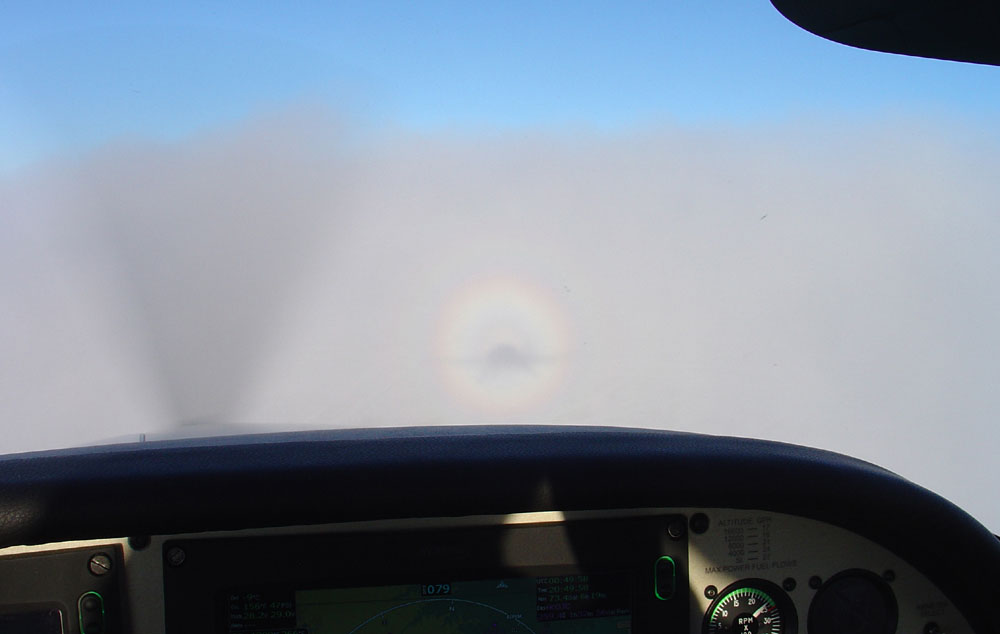“Saturday Afternoon Flight”
February 26, 2005“X-Cannes”
June 26, 2005CrossCountry
May 12, 2005
One of the things that light plane pilots always think about, but don’t always do, is fly all the way across the country. I have been flying around the Eastern half of the country for 2 years in my little Cirrus, but always taken the airlines on the business trips to California, simply to save time and money… But, Finally, I needed to see 3 different customers in 3 different parts of California, and my customer service guy in Kansas, all on one trip, and it was clear that it would actually be just about as fast to fly my own plane around the country as deal with so many airline legs… and once I am treated like a terrorist more than 5 times in one day, I am about ready to actually BECOME a terrorist. SO, with a bunch or World Aeronautical Charts spread out across the floor of my house, I planned the trip: South Carolina-Texas-San Diego-Carlsbad-Sacramento-Kansas City-South Carolina.
So, to answer everyone’s first question: 14 hours.
That is the approx flight time between South Carolina and San Diego. This is a lot more than the 5 hours you spend on an airliner, but after showing up an hour in advance to not get left behind, the connection in who-knows-where, layover, delays, waiting in line at the lost-bag counter, taxis from the giant airport into town from the main airport, and waiting for them to deliver your suitcase once they find it the next day, the light plane is STILL slower on the South Carolina-California run, but MUCH faster on the San Diego-Carlsbad-San Bernardino-Sacramento-Kansas City runs… especially considering that 4 of my destinations were actually ON airports without major airline service!
So, into the Cirrus and away we go! With a full tank of gas, oxygen, nav databases, de-ice fluid, and my suitcases and computer thrown into the back of the plane (all you have to do is deal with your suitcases airline-style few times to actively ENJOY tossing your bags into the back of a light plane) it was 110% power for takeoff and off to Austin, TX, my first stop. There were plenty of thunderstorms around the mideast, making the departure “interesting”, as I watched the little yellow jaggies on my moving map to be sure I stayed clear of lightning. About 7 hours later and one fuel stop, it was into a tiny airport called Lakeway, 10 minutes from my cousin’s house to spend a few days of relaxation. (It would have been about 5 hours direct with no wind, but a 30 to 40 -knot headwind turned it into a 7 hour trip with a gas stop. The plane holds a bit more than 6 hours of fuel)
Lounging around a wonderful house with a view over the green valleys and winding river of Austin, sipping iced tea and reading science fiction for a few days, was an excellent diversion, and then it was off for the second leg, this one over desert. I fly the Cirrus at 16,500, VFR, with an oxygen mask, at 165 kts, burning 10.5 gallons per hour, lean of peak mixture, at 48% power.
..the plane has a good autopilot that hooks up the GPS, so I really do not have to actually “fly” it at all… I just sit back and watch the world go by, recording the wind, ground-speed, and gas mileage (all displayed by the various EFIS’s) every 1,000 feet as I climb, so I can pick the most efficient altitude to fly.. and that’s really all I have to do for 99% of the flight if the weather is good, other than learn about the destination airport layout, frequencies, airspace, and weather from the various nav databases and Flight Service. Flying the Cirrus cross-country is totally UNlike flying the 172’s that I used to rent.. with the Cessnas you are constantly trying to accurately hand-fly and navigate (be it by VOR or visual navigation), but with the Cirrus, you don’t really have to fly or navigate (the GPS and autopilot do it for you) so instead you just spend time familiarizing yourself with the weather, wind, and destination to optimize the safety, speed, and efficeincy of the trip by trying to choose just the right altitude or just the right descent point (an important part of the flight when coming dow from 16,500 feet) to make everything work out smoothly and safely. With an old Cessna, you fly the plane. With a Cirrus, you manage the flight. In fact, with the side-stick controller, you don’t even have a yoke in your way to mess with your thumbing through maps, the pilots operating handbook, or any other things you want to look through as you go… FLYING the plane is not really needed! You just plan your strategy as you make your way across the globe. Turn off the autopilot to fly if you feel like it at any time.
Anyway, with 4 big bottles of water and 2 portable tents and a number of other emergency supplies that I keep in the back of the plane, it was off over the desert for 7 hours or so.. a part of the trip that I wanted to see was the TRANSITIONS from the lush forest of the east the deserts of the west… after all, it can’t just go from forest to desert in one place, right? I think a caught a few of these interesting transitions to new types of terrain in my photo-journal at the bottom of this page.
After a brief stop in the middle of the desert for fuel, it was off to San Diego, Gillespie Field, to meet an old employer of mine that is working on some interesting projects. (They are located right on the field, so light-plane access was PERFECT). I arrived at night (scheduled to meet with them the next day) and took a cab to a hotel in the scuzzy, cheap city of El Cajone, staying in a hole-in-the-wall hotel across the street from a Dennys. The “cheap hotel in a scuzzy strange city” is a long tradition of travellers everywhere in the USA, and my experience is no exception.. but I love seeing the at-least-slightly-different scenery, and partaking of the tradition: “watching-of-a-familair-televsion-show-in-a-different-place”, which in this case means watching “The Apprentice” in the cheap hotel room. There is something odd about watching a familiar TV show in a totally different part of the country.. both familiar and different.. like Seinfeld says about driving a car: “You’re inside, you’re outside, you’re moving, you’re sitting still.. that’s something!”
After a productive meeting with my ex-employer, it was off to Carlsbad (maybe a 10-minute flight, right past Mirimar Naval Air Station) to meet with Caleb, a Cessna 441 and 425 pilot that gives recurrency flight-training in an FAA-certified full-motion flight simulator that is run by X-Plane.. based right across the street from Carlsbad, making light-plane access PERFECT… I made a dozen or so tweaks to the software for him, and enjoyed hanging out with him and our mutual friends sipping Margaritas in the chacuzzi.. ah.. paradise! I stayed at his house in the bedroom of one of his daughters (now off to college) but all the girly pictures of Brad Pitt all over the room and pictures of giggling teenage girls all over the walls and little pink heart stickers on the mirrors gave me a certain un-easy feeling, as if maybe I was somehow like Michael Jackson for being in the “forbidden bedroom” or something…
ANYWAY, the next day it was off to Sacramento for the big one: To meet with PFC (Precision Flight Controls) to tweak out X-Plane for FAA-certification with their hardware, which is priced to get an FAA-certified version of X-Plane into a LOT of people’s hands (www.FlyPFC.com). But first, my flight took my directly over a certain X-Plane Mecca: San Bernardino. I picked this airport as the default airport for X-Plane because it has a nice long runway, is pretty flat, but has scenic mountains off the end of the runway to really see the terrain.. but I did this without ever having seen the REAL airport… so I just HAD to divert there for a few hours to check it out. The day was hazy enough that the view of the mountains was not that great, but the airport was FASCINATING. The facility was built a an Air Force base, I think during the Cold War, and as such has HUGE tarmacs and taxiways and runways, but is sort of in the middle of nowhere, so has almost ZERO traffic. The control tower is long-ago closed, and the field is littered with huge old hangars, and some old airliners set out to age in the dusty desert wind. Landing there you can taxis for MILES to one end of the airport or the other on HUGE old taxiways that are so giant they could easily serve as runways as well.. but with almost no traffic to the airport, why bother to re-designate them? An giant old hanagar is up at the East end of the field with a little “lounge” built into the hangar consisting of an old sofa from the 50’s, a TV from the 60’s, and some dilapidated old tables. The maintainance guy there doubles as the.. uhh.. EVERYTHING, puttering aorund the hangar, working on the old Cessnas and Mooneys, fueling the occasional wanderer that comes blowing through like a tumbleweed. An old 727 that is cut in half sits beside the hangar, baking in the sun and offering shelter to a pigeon. Some old tanks and pipes of unknown pourpose snake around the area, and some ancient old planes sit tied down on the ramp, all trace of brightness in their paints long ago faded by the dust and sun. Walk or taxi the 2 miles down to the other end of the airport and you will see.. THE OLD HOWARD HUGHES AND TWA HANGARS! Giant old buildings with the HUGHES and TWA logos emblazoned on the side! I am not kidding! Well, I am SORT of kidding.. the signs were just painted on a few years ago for the making of the movie “The Aviator”, and what is interesting is that the same hangar that says HUGHES on one side says TWA on the other! Maybe the competition between the companies was not as harsh as we thought! 😉 The huge old hangars are EMPTY.. acres or California real-estate in a strange limbo between a real-estate-hogging government paranoid of the Russians, and a pit-stop for light planes that need only 1/100 the space… Despite the empty, huge old hangars, there is some odd machinery that looks like a mini oil-refinery that I can NOT explain, and more old airliners set out to bake… some of them cut in half, and one 727 lying on it’s left wing with it’s gear collapsed like a wounded bird. There is a fire department there that stays in a high state of readiness, and I am told that at times the airport is very busy supporting fire-fighting operations.. at THAT time, all that real-estate would come in useful! (As well, a huge Russian Antanov stops by to pick up rocket boosters and carry them from the nearby factory to wherever they are used, so that is another good reason for a big field). Wandering around the airport is odd, because even though you are ALMOST alone, there is occasionally the odd firefighter or security guard wandering around on unknown business.. but you ALMOST have the huge airport to yourself.. sort of like the abandoned old amusement parks from every Scooby Doo episode ever made, except in the hot dusty sun. After wandering around through the deserted old airport, inspecting the old, dusty machinery baking in the heat, it was into my shiny, sleek little plastic bird and off to Carlsbad!
On the way, I got permission from a controller to fly through a restricted zone right over Edwards Air Force Base, a huge old dry lakebed, and saw about the coolest thing I have ever seen from the air: an INCREDIBLE race-track, or test-track, seemingly deserted in the desert! OOHH!!! If I was on the ground with either of my cars I would have my way with that track! IT had a HUGE, LONG oval with long, long straight-aways and huge-radius turns.. you could run a Corvette at 180 mph there all the way around without ever slowing down! AND, there was a BRIDGE OVER THE OVAL to get to the INSIDE of the track without crossing the road.. containing an EXCELLENT little F-1 track with about 20 or 30 turns of varying radii! AND there were some drag-strip for testing acceleration, and a huge paved area for skidpad manuevers.. it was INCREDIBLE! At that time, I truly wished I was DRIVING and not flying!!! (Note: I have since learned this is the Hyundai Proving Grounds)
So, anyway, with a deep feeling of regret at that moment that I was winged instead of wheeled, I stopped my circling over the track like some sort of big techno-buzzard, re-engaged the autopilot and resumed my course back to PFC in Sacramento.
PFC is located right on the airport, so I basically taxied right up to the office and jumped right out and got to work on the FAA-Certified version of X-Plane for PFC!
During my stay there, a brand new Boeing 777-200 LR came taxiing in to operate out of Mather field for it’s flight-test program… the interior of the plane was filled with computers to help with flight-test, and water-ballast containers so they could shift the center of gravity around in-flight! Cool! I have plenty of informative pictures below.. so, now, a TON of pictures… I hope you like looking at your neighbor’s vacation pictures for very long periods of time!
Transitions: Observe the transation from farmland to desert occurring across only a few miles:
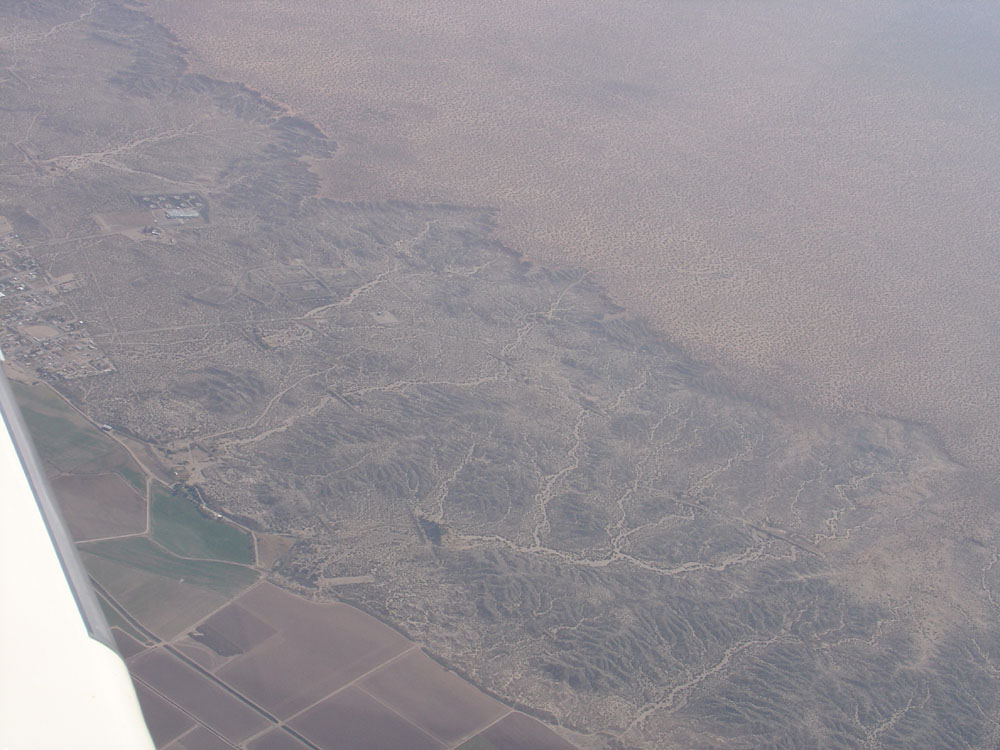
Texas… what are those things on the ground?
Ah! Now you see what they are!
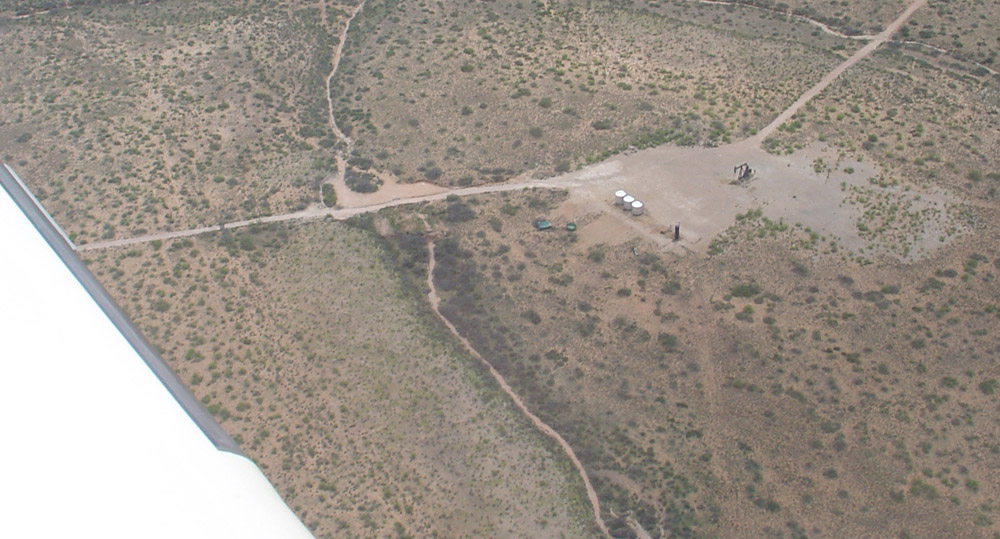
They also have wind-turbines:

Times you are glad your single-engine plane has a parachute just in case:
The South-West:
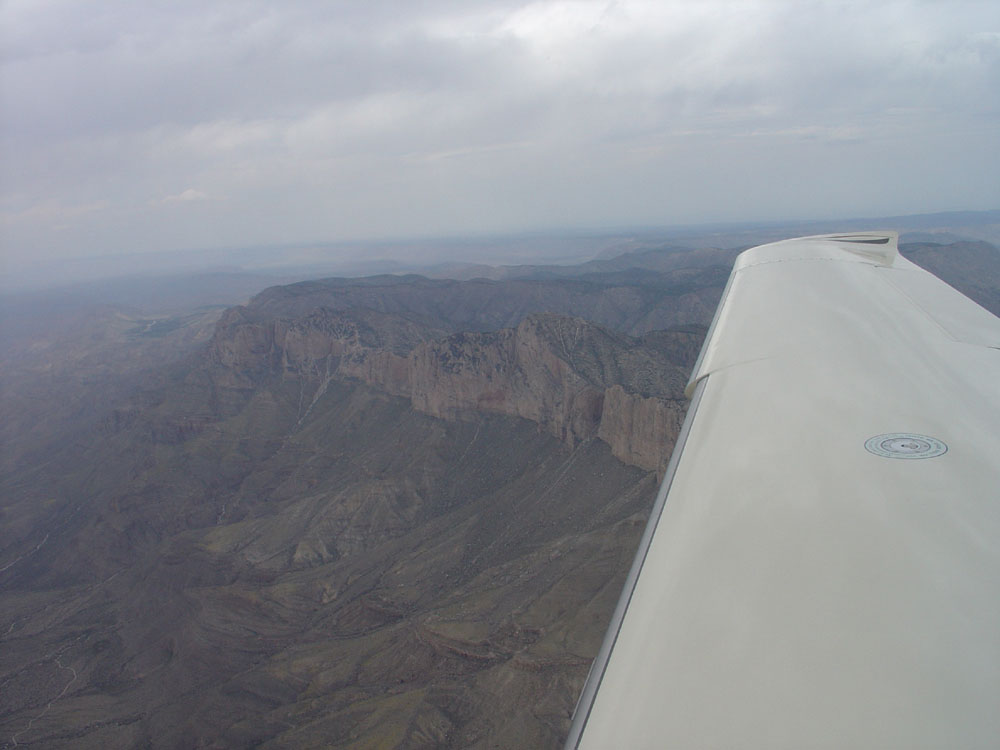
Stopping for gas in the desert:
Things you only see when flying:
So-Cal approach at sunset:
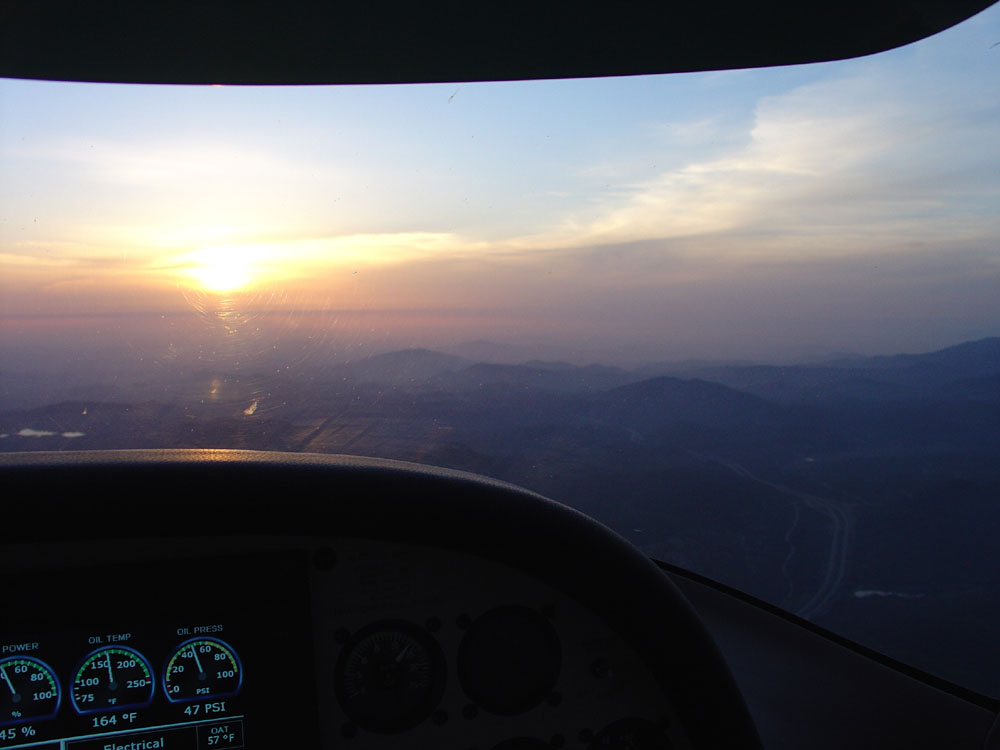
San Bernardino airport:
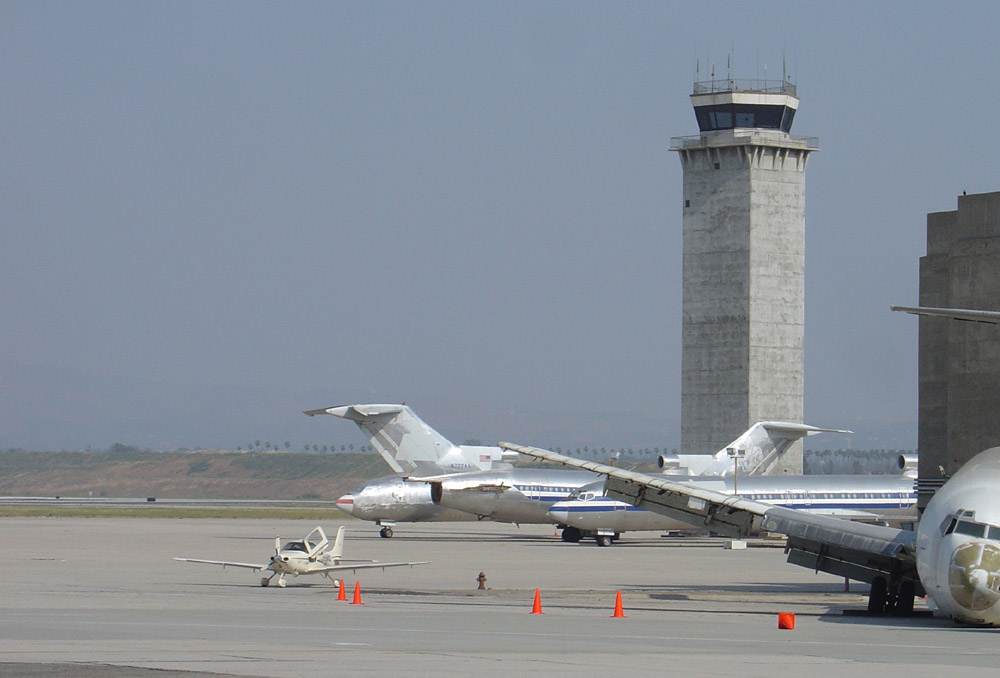
The big and old and the new and little:

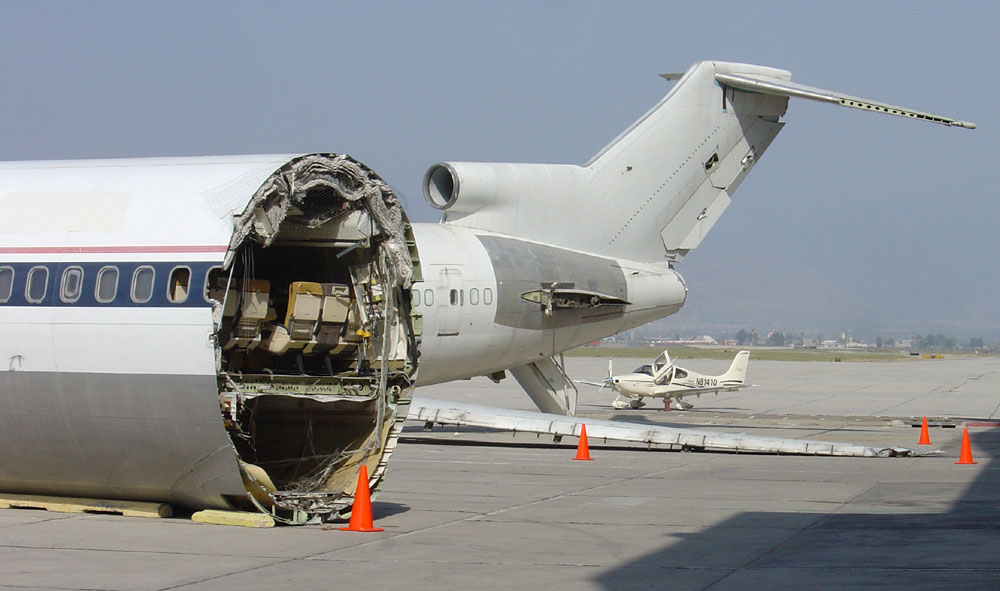
Old 727’s.. what happens to old airliners in the sun?
The mountains of San Bernardino.. how do they compare to those in X-Plane?
Mecca:

The mountains as I work up the state of California:
What have we here??
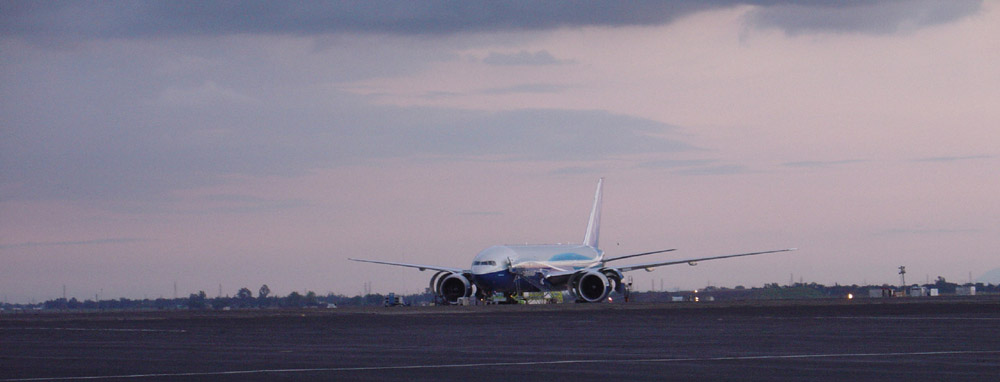
Let’s check it out!

It’s a BIG BIRD!
The engines are not too small!
The landing gear is pretty complex:
The biggest turbo-charger ever!
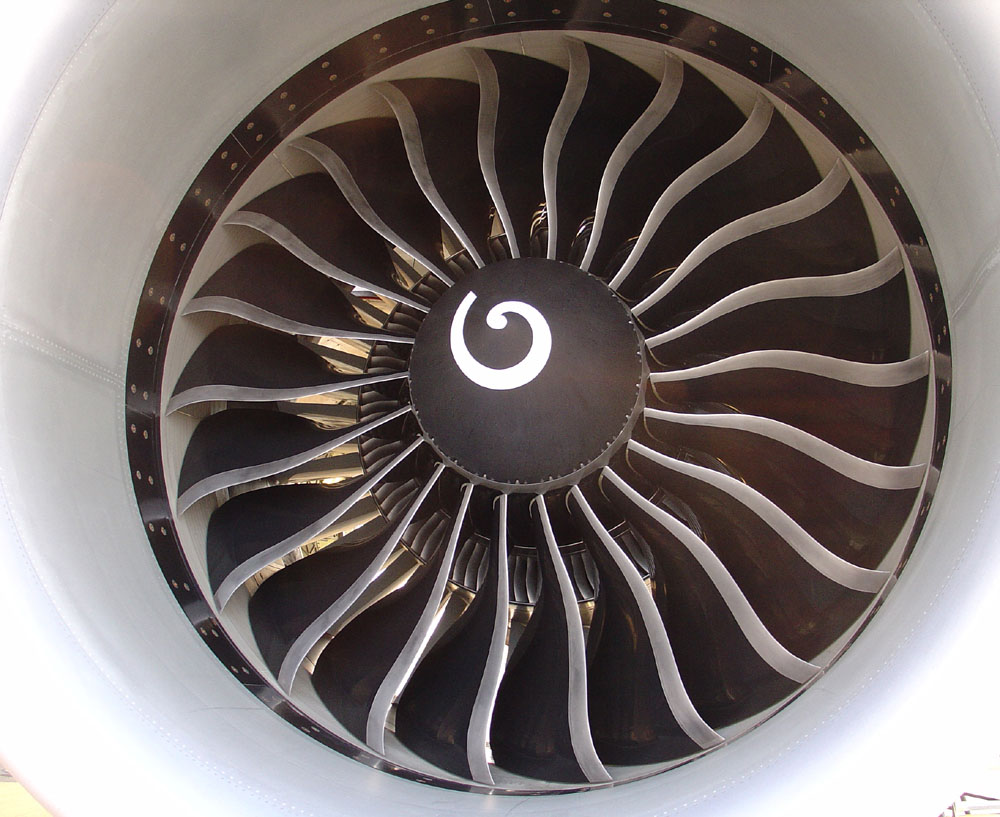
Boeing flight-test pilots like to drink lots and lots of beer!
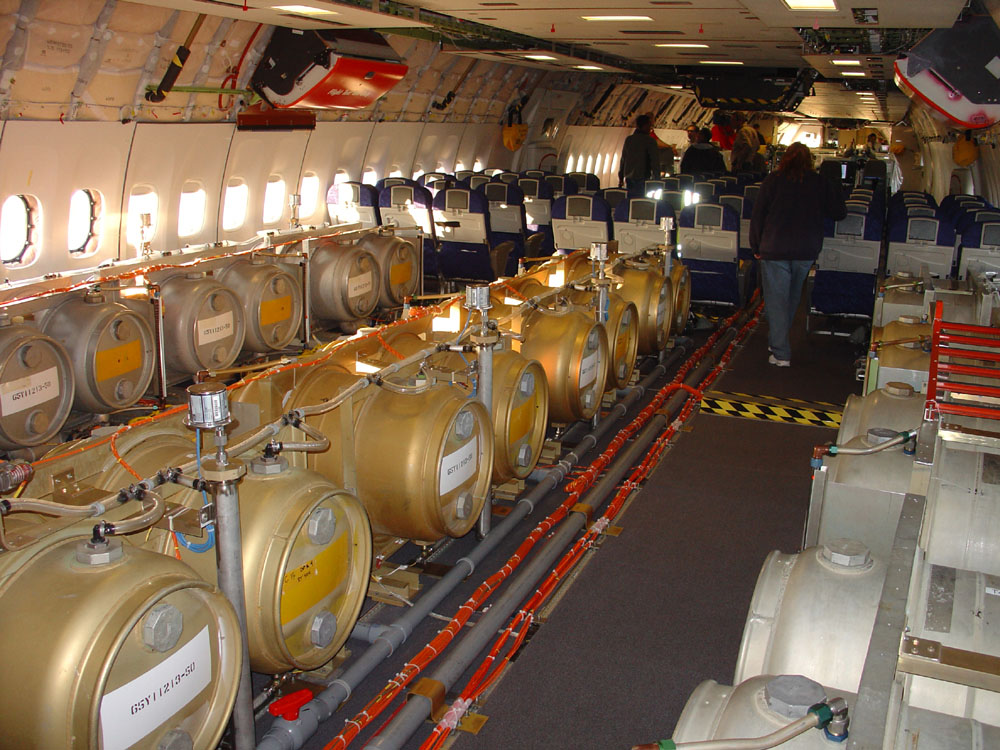
…and then the pilots play lots and lots of computer games once they get drunk!
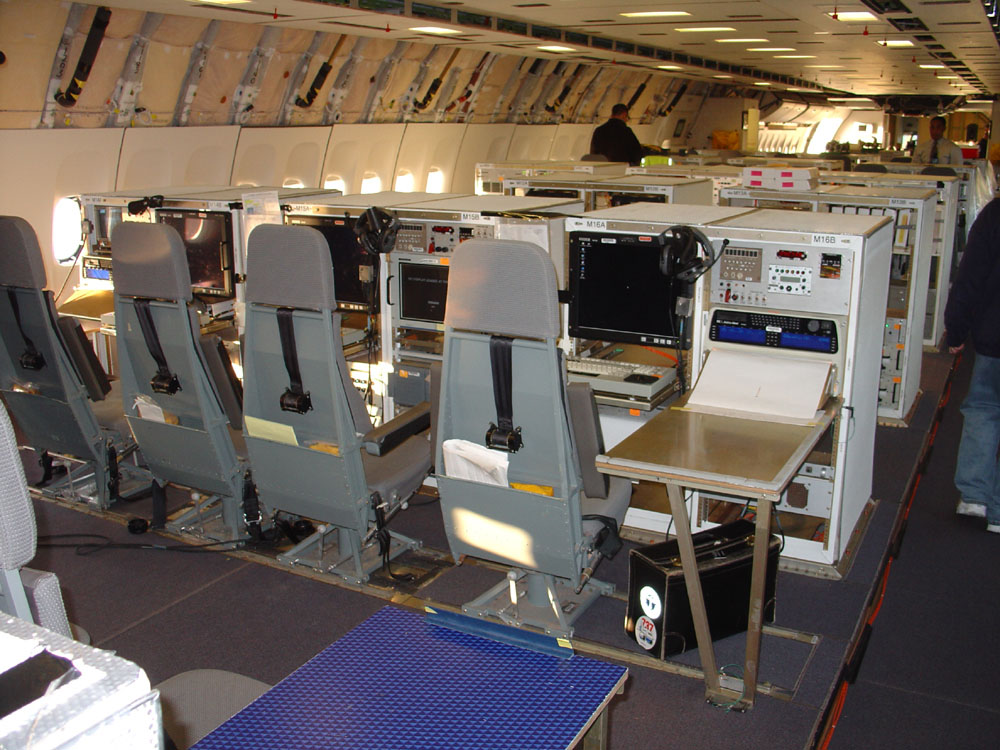
Where the pilots get biz-zay:
“Welcome to Time-Life may I take your order please?”
Don’t trust the pilot!!!!!
I hope they don’t start that thing now!
And flying back home later… observe the shadow… a Cirrus just like mine about to come out of the clouds and hit me, with a rainbow around it?????
